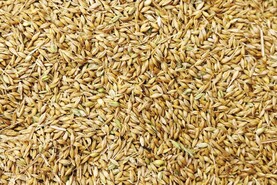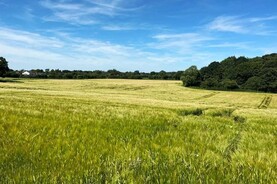There are a number of reports of aphids in crops of spring barley at present.
The majority of crops are at high risk of barley yellow dwarf virus (BYDV) infection this year, as crops was sown in April and May.
An aphicide should be applied to these crops at the three- to four-leaf stage for the best chance of control.
If you do spot aphids, it is important to remember not all will infect your crops and some of them may be resistant to pyrethroids.
Crops planted in March are at low risk and do not require an aphicide.
New research into BYDV and aphids is ongoing at Teagasc, but there is not enough data gathered from this research to change any advice being given at present. Therefore, the research being used dates back to 2008.
At a Teagasc crop walk in Oak Park last week, figures from that research explained that the best timing for aphicide application is the four-leaf stage using a full rate of insecticide.
Table 1 shows that when crops were sprayed when they have four leaves, it was the most economical. The percentage of BYDV infection was 8.6% and the yield was 5.6t/ha when treated at four leaves.
There was no advantage to yield with two applications and two applications can also contribute to the build-up of resistance to pyrethroid sprays in aphid populations.
In fact, there was no advantage to yield where four sprays were applied, so only one application should be used.
Where crops were untreated in this trial, the percentage of the crop infected with BYDV was 36.4% and yield was 1.3t/ha lower than at the optimum spray timing of four leaves.
It was suggested to monitor how the aphicide worked in the week after application - that is, check if dead aphids are present.
A lot of crops will now be at the three- to four-leaf stage or coming near it, some earlier-sown crops may even be past it, so watch the timing of this spray.
At this stage, you could also add in nutrition for known deficiencies such as magnesium and manganese.
Natural predators
Some farmers have stopped using aphicides or others use them only in a high-risk situation.
It is important to remember that when using aphicides, they can affect natural predators, so while you are spraying for aphids, you may hit a ladybird, which can actually help to control the aphids.
Creating habitats such as hedgerows and arable margins for natural predators can increase the level of them in fields.






 This is a subscriber-only article
This is a subscriber-only article










SHARING OPTIONS: